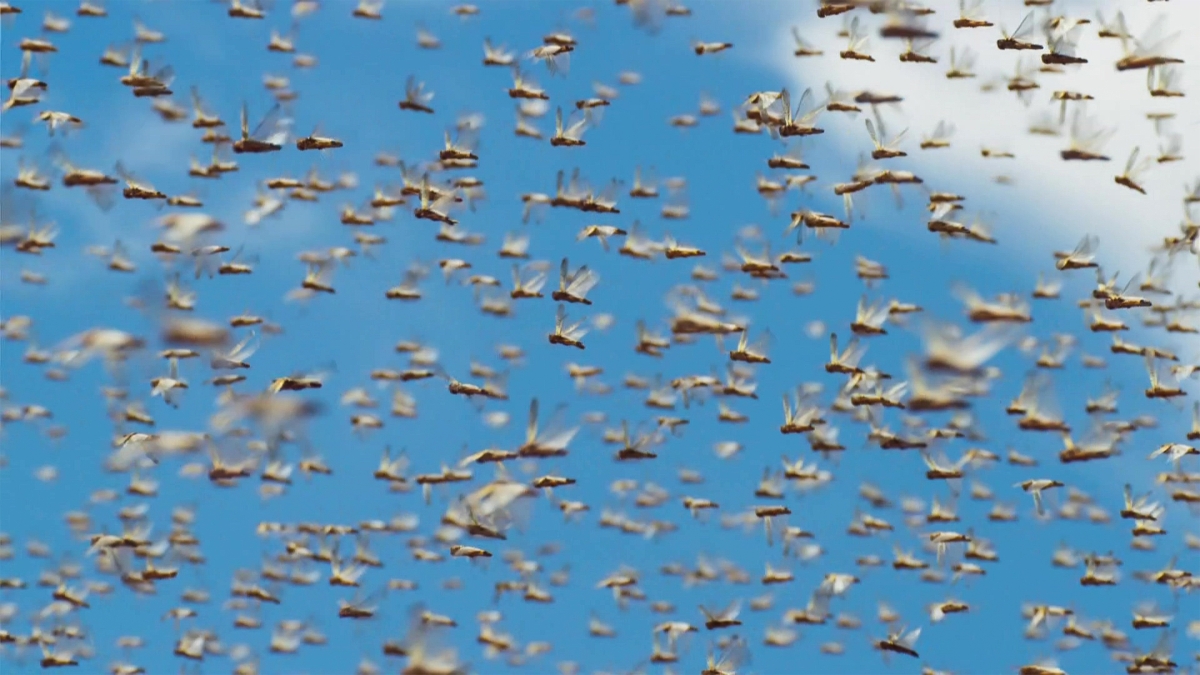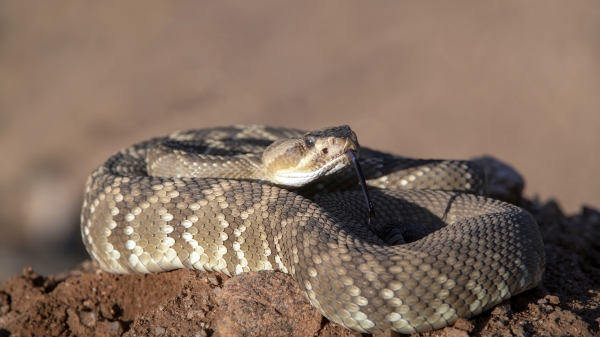Global Locust Initiative wins USAID/OFDA grant to launch pilot project in Senegal

Locusts have afflicted humanity throughout history, with devastating consequences. It’s no surprise that locusts are one of the 10 plagues in the biblical book Exodus. These insects are species of grasshoppers that can swarm in the millions and wipe out fields of crops in the blink of an eye.
The Global Locust Initiative, an Arizona State University program aiming to study and manage locust outbreaks, recently won a half-million-dollar grant from the Office of U.S. Foreign Disaster Assistance (a part of the U.S. Agency for International Development). This is the first time an ASU program has been awarded an OFDA grant, according to research advancement manager Ann Marie Hess, whose dedication to this partnership and work as a research advancement manager, alongside program manager Ariel Rivers, was critical to landing the grant.

With this funding, the Global Locust Initiative team — directed by senior sustainability scientist Arianne Cease (pictured left) — will test whether soil amendments to millet fields in Kaffrine, Senegal, decrease locust outbreaks, improve millet yields and increase farmer livelihoods.
Cease’s research over the past 10 years has linked the nutrient content of plants to locust population dynamics. Unlike most herbivores, locusts prefer the “donut diet” of low-nitrogen, low-protein, high-carbohydrate plants, which often result from overuse of the landscape.
This project in Senegal will be “the first pilot study to use soil amendments as a tool to see if they can help keep locust numbers low across a broad area,” Cease said. The initiative chose Kaffrine as a pilot region for a few reasons: It’s a hotbed for the Senegalese locust, and the team already has experience and connections in the region due to Cease’s time there in the Peace Corps and earlier Global Locust Initiative research funded by the National Science Foundation.
Cease Lab postdoctoral researcher Marion Le Gall has spent the past two summers studying the Senegalese locust in the Kaffrine region. Her research has shown that this species prefers control (low-protein, high-carbohydrate) millet over nitrogen-fertilized millet, and has a lower survival rate and lays smaller eggs when eating fertilized millet. Additional work by School of Sustainability Master of Science student Mira Word, now an alumna, found a negative correlation between locusts and nitrogen in soil and plants, and that soil improvement practices may help keep locusts at bay.
To test these principles on a larger scale, the USAID study will be conducted for a year starting in March 2019 and the Global Locust Initiative will work with local Kaffrine partners, 40 farmers in five villages, and other on-the-ground teams such as women’s groups. To facilitate communications and activities, a community outreach specialist was recently hired. ASU students and a postdoctoral researcher from McGill University will also be assisting in the field.
Testing on-the-ground solutions
Specifically, the team will be testing whether small doses of nitrogen fertilizer applied to the base of each millet plant will bring about the expected impacts. Cease recognizes that nitrogen fertilization is not the perfect long-term solution because it can have negative effects downstream if used in large amounts.
“Because it’s only a one-year project and we want to see if the results will work immediately, we’re starting out with nitrogen fertilization in the short term,” Cease said. “But in the long-term, if we do see the impacts that we’re looking for, then we will move forward with integrating our work with other programs that are looking at more sustainable soil amendments.”
In conjunction with soil amendments, and training farmers on how to use them, the Global Locust Initiative will be implementing other projects in the region including an ID booklet and a women’s group early warning system. The booklet will be in the local language (Wolof) and will help villagers tell the difference between locusts that are hazardous for crops and those that are benign. If harmful locusts are spotted, the ID booklet has information on how to contact the initiative's partner in Senegal — the plant protection directorate (called the DPV).
The team will also work with women’s groups (who, as Cease said, are “highly organized and have made many remarkable advancements in the region”) to monitor light traps, which will be installed in each of the five pilot villages. Like many bugs, locusts are attracted to light at night. When locusts fly into the traps, the women can pick them out and identify them.
“They can determine the numbers of locusts coming in and if there are gravid females (with eggs),” Cease said. “If you get a bunch of fat females filled with eggs in your light trap, you know there are probably a lot more around the village laying eggs.”
The women will notify the plant protection directorate of any alarming locust activity, with the long-term plan that this information will be used to augment their monitoring and forecasting program.
Cease said that this pilot program couldn’t have moved forward without the initial research and on-the-ground work in Senegal, and credits ASU alumnus Balanding Manneh and retired DPV phytosanitary station director Alioune Beye as key to their early efforts. Manneh — the 2016 World Hunger Leadership Award winner, who’s originally from The Gambia (a country that shares language and customs with Senegal) — worked with the Cease Lab for more than three years and visited Senegal twice with the team. In Senegal, he conducted field research and did most of the translating between the Global Locust Initiative team and farmers, which was essential to build understanding.
“The Senegalese people are known for their ‘teranga’ — Wolof language word for hospitality,” Manneh said. “The Cease Lab team received a warm welcome from the farmers, villagers and local collaborators,” including the foundational DPV partners. “They know that understanding locusts and safeguarding their livelihoods is a collaborative effort that requires many stakeholders.”
More Environment and sustainability

ASU launches groundbreaking partnership to address water insecurity in Arizona
For the past two years, Arizona has contended with record-breaking heat and over 1,000 heat-related deaths in Maricopa County alone. However, the county is just a microcosm of the rest of the…

There's a rattlesnake in your backyard: What do you do?
Editor’s note: This story is featured in the 2024 year in review.A snake slithers onto your back porch one sunny morning.What do you do?Call a relocation expert, grab a shovel and try to…

Pettinger to guide Southwest Sustainability Innovation Engine's sustainable technologies to market
There’s a lot of daylight between coming up with a good idea and turning that idea into something people can use.Katie Pettinger is here to help bridge that considerable gap. As the new chief…